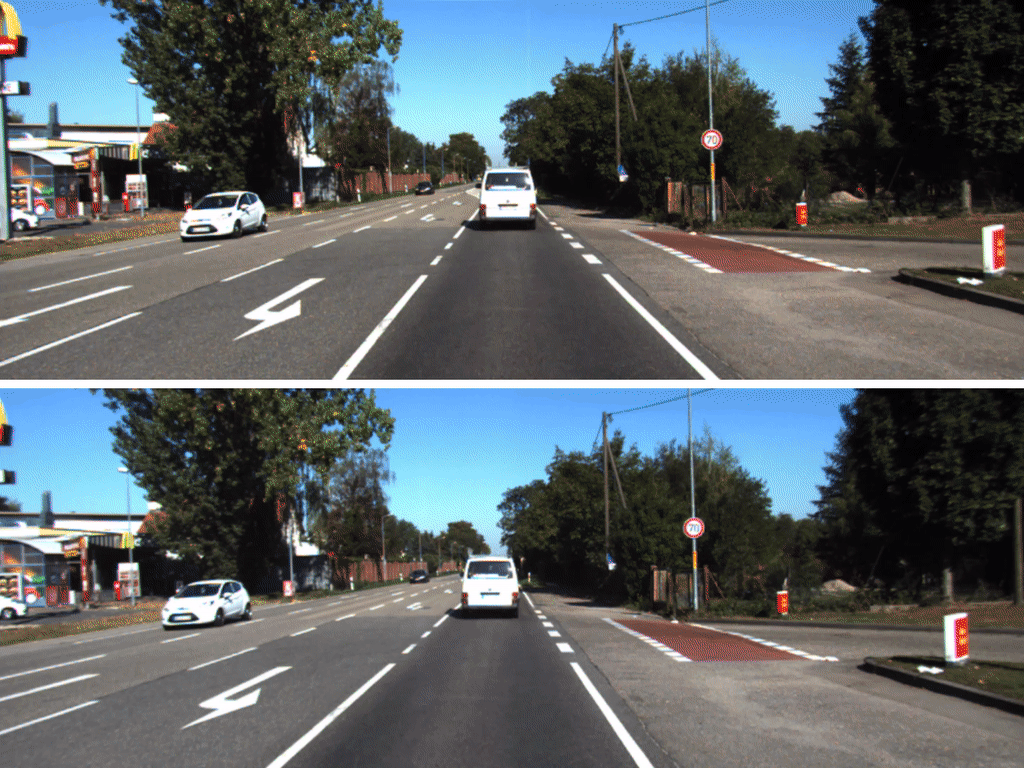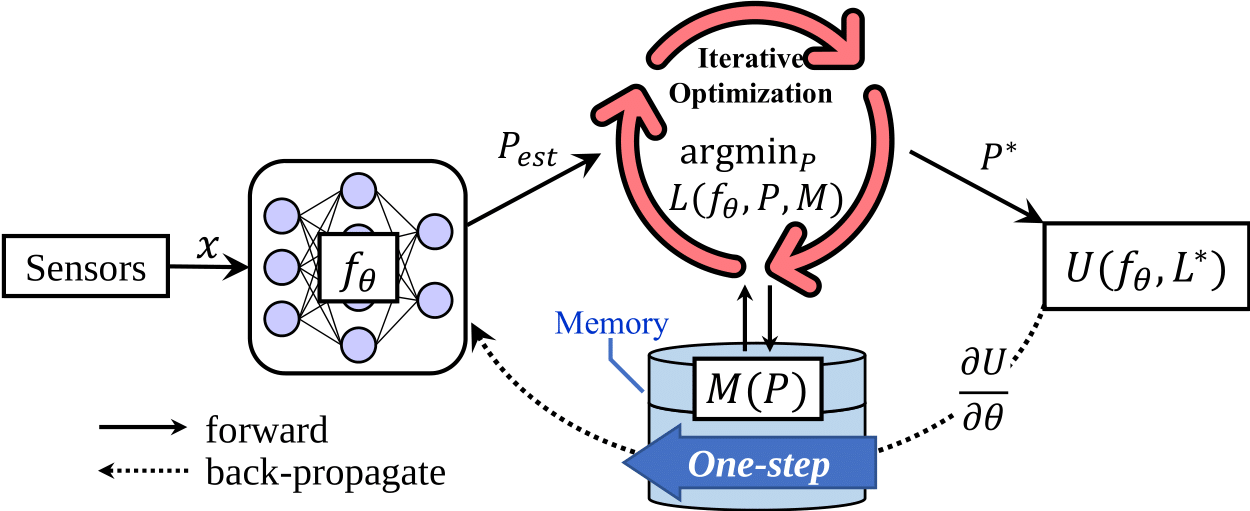iSLAM is a novel learning framework for SLAM tasks, which fosters reciprocal correction between the front-end and back-end, thus enhancing performance without necessitating any external supervision.
We formulate a SLAM system as a bi-level optimization problem to make the front-back-ends bidirectionally connected. As a result, the front-end model is able to learn global geometric knowledge obtained through pose graph optimization by back-propagating the residuals from the back-end. We call this imperative learning due to the passive nature of this process.
This design significantly improves the generalization ability of the entire system and thus achieves the accuracy improvement up to 45%. To the best of our knowledge, iSLAM is the first SLAM system showing that the front-end and back-end can learn jointly and mutually contribute to each other in a self-supervised manner.
iSLAM: Imperative SLAM, Taimeng Fu, Shaoshu Su, and Chen Wang, arXiv preprint arXiv:2306.07894, 2023. PDF.
Please cite us as:
@article{fu2023islam,
title={iSLAM: Imperative SLAM},
author={Fu, Taimeng and Su, Shaoshu and Wang, Chen},
journal={arXiv preprint arXiv:2306.07894},
year={2023}
}
We test our framework on KITTI and EuRoC benchmarks, which have distinctive motion patterns. It is seen that after 6 iterations, both the front-end and back-end improve themselves significantly. Note that this is a self-learning process and no ground truth labels are used.
The figure below visualizes the improvements VO trajectories through imperative learning.
Video: https://www.youtube.com/watch?v=rtCvx0XCRno
Webpage: https://sairlab.org/iSLAM/
Please use the environment.yml we provided.
conda env create -f environment.yml
We tested our framework on KITTI Odometry. However, as KITTI Odometry does not contain IMU data, we downloaded KITTI Raw instead. The mapping between the two is:
00: 2011_10_03_drive_0027 000000 004540
01: 2011_10_03_drive_0042 000000 001100
02: 2011_10_03_drive_0034 000000 004660
03: 2011_09_26_drive_0067 000000 000800
04: 2011_09_30_drive_0016 000000 000270
05: 2011_09_30_drive_0018 000000 002760
06: 2011_09_30_drive_0020 000000 001100
07: 2011_09_30_drive_0027 000000 001100
08: 2011_09_30_drive_0028 001100 005170
09: 2011_09_30_drive_0033 000000 001590
10: 2011_09_30_drive_0034 000000 001200
We use synchronized images and raw IMU data (as the synchronized IMU is only 10Hz, while the raw is 100Hz). So you need to download both and replace the oxts folder in the synchronized data with the one in the raw data. You can use ./tools/replace_imu.py to do the replacement.
Please download EuRoC here.
Please download the pretrain model here and put it in ./models.
We provide run_kitti.sh and run_euroc.sh. Please open and change data_dir to your path to a specific sequence. The results will in ./train_results/${project_name}/${train_name} and the trained models will in ./train_results_models/${project_name}/${train_name}, so you may also change these two variables to specify the output path.
Finally, just run:
sh run_kitti.sh
sh run_euroc.sh
This work was partially supported by Cisco Systems, Inc.



